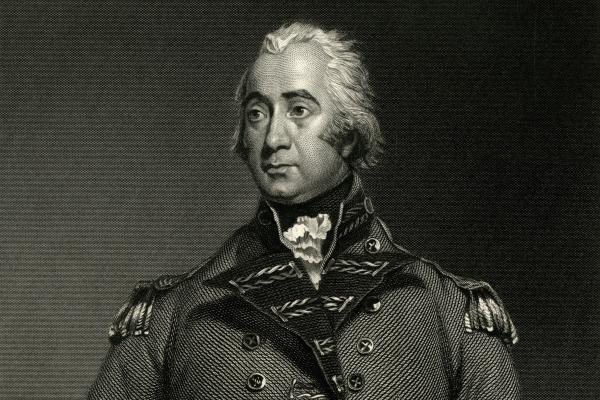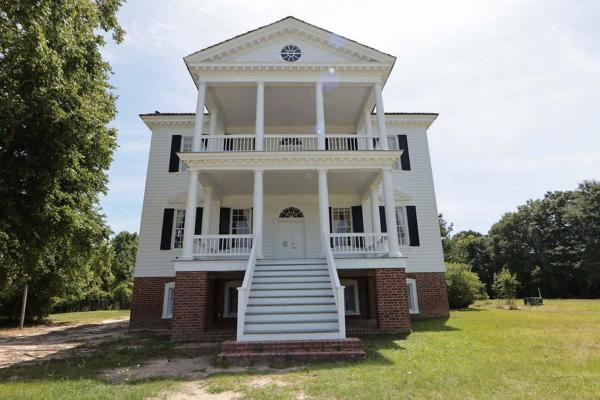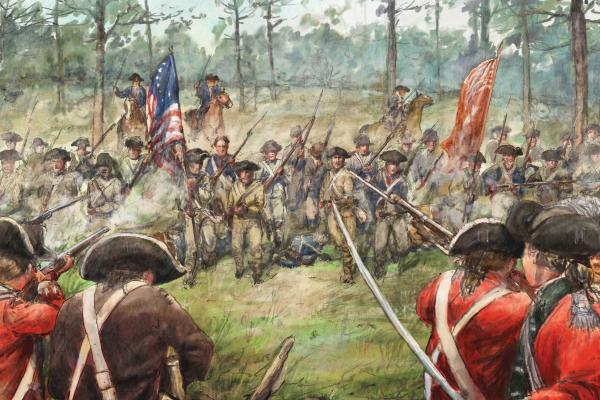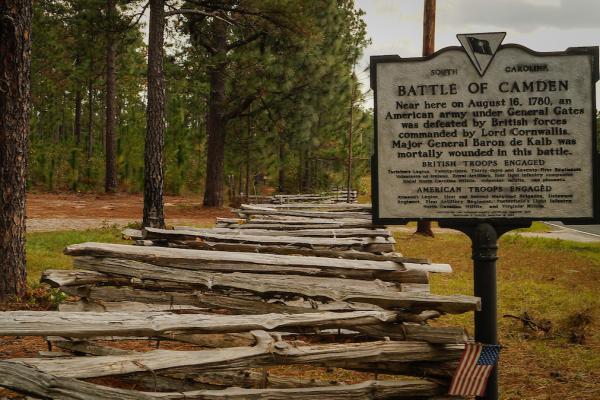Joseph Kershaw
The white Georgian mansion that dominates the grounds of Historic Camden today is the reconstructed home of local businessman and patriot Joseph Kershaw. A native of Yorkshire, England, Kershaw came to the colonies before 1748 and worked for a merchant in Charleston. Within a decade, he moved to this settlement — then known as Pine Tree Hill — where proximity to the Great Wagon Road and the Wateree River made for easy distribution of goods traveling between coastal Charleston and the backcountry frontier. Ambitious and enterprising, Kershaw established a store called Kershaw and Company and, in time, built flour and grist mills, indigo works, a tobacco warehouse, a distillery, and a brewery. His efforts helped turn the town into a commercial hub. The wealthy merchant was also instrumental in creating a plan of streets and lots in Pine Hill, which became the village of Camden.
With the onset of the war, Kershaw was elected to the First (1775) and Second (1775–1776) Provincial Congresses and the first five General Assemblies (1776–1784). As a legislator, he worked to win the support of interior settlers and Catawba Indians for the Patriot cause. He also served as an officer in the local militia and saw action at Purrysburg and Stono Ferry. He and his brother, Ely, were captured by the British after the Siege of Charleston and sent back to Camden, but Cornwallis had them imprisoned and exiled, first to British Honduras and then Bermuda. From captivity, Kershaw somehow managed to mortgage his Carolina lands to secure badly needed supplies for American forces. Unfortunately, the vessel carrying the cargo was seized. He was eventually released in a prisoner exchange and returned to South Carolina. His grandson, Major General Joseph Brevard Kershaw, served in Robert E. Lee’s Army of Northern Virginia during the Civil War.
The British Occupy Camden
When Cornwallis marched his 2,500 troops into Camden in June 1780, his army encountered no opposition. The British promptly confiscated any property of value, including Joseph Kershaw’s opulent house, his mills, and his store. Cornwallis’s men fortified these grounds with a stockade wall and five redoubts (outer defensive works). They also constructed barracks and a hospital and shored up the defenses of the town’s powder magazine, the courthouse and jail complex, and Kershaw’s house, where Cornwallis and Lieutenant Colonel Francis Lord Rawdon, the British commandant at Camden, made their headquarters.
Turning a rural town into a garrison for such a large force required a great effort, as Lord Rawdon reported: “This village is by no means capable of holding the number of persons who require quarters in it. I have therefore sent for a quantity of plank and boards, with which I hope we shall speedily fit up some kind of barracks and some huts for officers…By degrees we shall get into order and cleanliness….” Rawdon had the burden of overseeing the welfare of the men in camp. Smallpox and sickness were a constant threat, as were desertions. Keeping thousands fed was a full-time job, and Camden residents, whether Patriots or Loyalists, were pressed to contribute. Rawdon explained to Cornwallis, “I have taken care to lay up here a sufficient stock of provisions to support the garrison for many days in case I should at any time be reduced to the necessity of keeping close within the works, and I am continually adding to that hoard by collecting from the country much more than is necessary for our ordinary consumption.”
More to Explore






